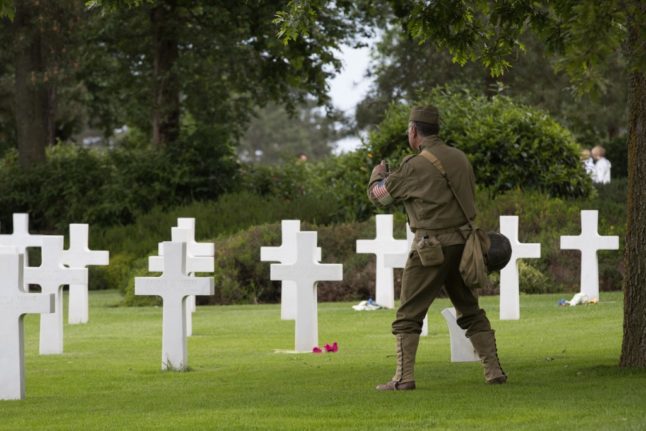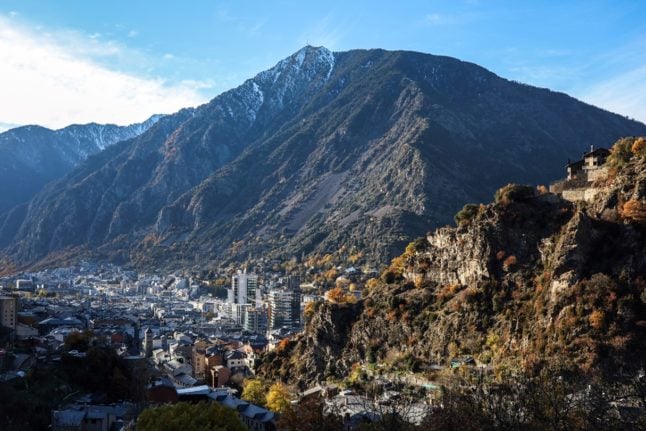Every year, the anniversary of the D-Day landings are marked in northern France, with commemorations at memorials along the coast.
This year, French prime minister Elisabeth Borne will be among the dignitaries honouring those who died during the landings.
As part of its preparations for the 80th anniversary of the landings in 2024, the Normandy tourist board has also commissioned a video by travel influencer Bruno Maltor and TV presenter Jamy on the subject of the landings – informal in style it’s intended for younger French people, to ensure they remain aware of their own history.
Here are some of the other lesser-known facts about the D-Day (or Jour-J in French) landings;
‘Erotic adventure’
“When the Germans came, we told the men to hide. But when the Americans came, we had to hide the women!”
The French joke refers to the “erotic adventure” which the US military promised American soldiers fighting in France, historian Mary Louise Roberts writes in “What Soldiers Do: Sex and the American GI in World War II France.”
Propaganda painted France as “a tremendous brothel inhabited by 40 million hedonists”.
Readers of the military newspaper “Stars and Stripes” could learn the French for “you are very pretty”, “I am not married” and “are your parents at home?”, whereas the German vocabulary section offered phrases such as “No cigarettes!” and “Line up!”, Roberts explains.
American promiscuity sparked outrage in cities like Le Havre and Reims, where sexual acts “took place in parks, cemeteries, streets and abandoned buildings”.
More than 150 American soldiers were tried for rape, most of them black men, underlining the racial discrimination at the time, Roberts said.
Threat of defeat
With D-Day looming, the Allies prepared for the worst.
Supreme Commander of Allied Forces in Europe – and future US president – Dwight Eisenhower, prepared himself in advance for announcing a failure.
He penned a statement on June 5th entitled “In case of failure” which said that “any blame or fault… is mine alone”.
“My decision to attack at this time and place was based upon the best information available…. The troops, the air and the Navy did all that bravery and devotion to duty could do.”
Allied forces quickly gained control of five points along an 80-kilometre front on beaches codenamed Omaha, Utah, Gold, Juno and Sword.
But at Omaha, heavy casualties earned the beach the sombre nickname “Bloody Omaha”.
High cliffs there gave the Germans an immediate advantage.
Americans were left waist deep in rough seas as crashing water sank their landing craft, and some drowned. Of the 34,000 Americans deployed, 2,500 were killed or wounded.
Some paratroopers drowned in “catastrophic” jumps, said French historian Jean Quellien, author of “The Battle of Normandy”. Heavy equipment weighing 30 to 40 kg pulled them underwater.
Inflatable tanks
“Fake news” might be considered a modern phenomenon, but the British led a deception campaign, codenamed Operation Fortitude, to try and fool the Germans into thinking the Allies planned to attack Scandinavia, then France’s Calais region, rather than Normandy.
Inflatable tanks were positioned on the British coast facing Calais, and metallic lures were used to make it appear to German radar that a large force was about to land near Calais. Fake radio messages were leaked to German
intelligence services.
Even after the D-Day landings on June 6th, the Germans believed a second attack was planned in the Calais region. Hitler eventually ordered troops to join the Normandy front.
Native American ‘code talkers’
Communicating through coded messages would have taken too long during the landings and commanders couldn’t speak in English in case they were intercepted by the Germans.
Instead, the Americans used Native American “code talkers”, especially the Comanche, who worked in their indigenous language.
John Parker, son of “code talker” Simmons Parker, remembers that “bomber plane” was translated as “pregnant bird”.
He said his father told him that in the Comanche language, “crazy white man” meant Hitler.
Landing in… Indonesia
In December 2018, the British postal service, Royal Mail, apologised after releasing a stamp commemorating D-Day’s 75th anniversary showing American troops landing in Indonesia, then known as Dutch New Guinea.
“We would like to offer our sincere apologies,” Royal Mail said.



 Please whitelist us to continue reading.
Please whitelist us to continue reading.
Member comments